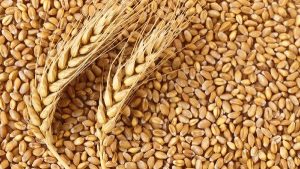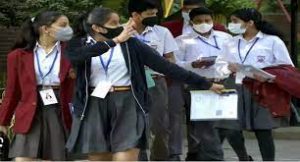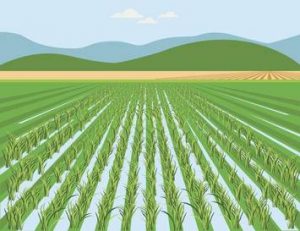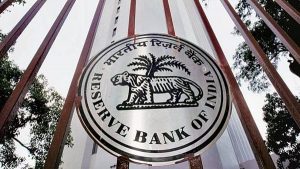Today’s Current Affairs: 11th Jul 2023 for UPSC IAS exams, State PSC exams, SSC CGL, State SSC, RRB, Railways, Banking Exam & IBPS, etc
Table of Contents
Flood Warning : Delhi Government

The Delhi government recently issued a flood warning as Haryana released more than one lakh cusecs of water into the Yamuna river from the Hathnikund barrage.
- Yamuna River is the major tributary of the Ganges River.
- It rises in the high Himalaya, in the Yamunotri Glacier, at the height of 4,421 meters.
- The 1,376 km long Yamuna flows solely through India, crossing three states: Uttarakhand, Uttar Pradesh and Haryana.
- After rising in the high Himalayas, it flows in a southerly direction swiftly through the Himalayan foothills and, exiting Uttarakhand, onto the Indo-Gangetic Plain, along the border between Uttar Pradesh and Haryana state to the west.
- The Eastern and Western Yamuna canals are fed from the river at that point.
- The Yamuna then passes Delhi, where it feeds the Agra Canal.
- South of Delhi, and now wholly within Uttar Pradesh, it turns south-eastward.
Fresh Consultation On The Issue Of Total Expense Ratio (TER) For Mutual Funds : SEBI

The SEBI Board meeting held recently decided to issue a fresh consultation on the issue of total expense ratio (TER) for mutual funds.
- Total Expense Ratio (TER) is a measure of the total costs associated with managing and operating an investment fund, such as a mutual fund.
- These costs consist primarily of management fees and additional expenses, such as trading fees, legal fees, auditor fees, and other operational expenses.
- The total cost of the fund is divided by the fund’s total assets to arrive at a percentage amount, which represents the TER.
- TER is also known as the net expense ratio or after reimbursement expense ratio.
- It is used by investors to compare the costs of the scheme with its peers and also in relation to the returns available from that scheme.
- It is a key element in making an investment choice, as those funds which consistently show a high TER may not provide high returns, since high expenses tend to erode the returns generated.
Cluster Bombs: Cluster Bombs : United States To Supply Ukraine

The decision by the United States to supply Ukraine with cluster bombs has caused concern among key US allies.
- Cluster bomb is a type of weapon that is designed to disperse smaller bombs over a large area.
- They are also known as cluster munitions, with the smaller bombs referred to as submunitions or bomblets.
- They can be dropped from air or fired from ground/sea, dispersing dozens or hundreds of bomblets across a large area.
- These explosions pose a grave threat to anyone in the vicinity, causing death or severe injuries.
- Some bomblets fail to detonate immediately, leaving behind unexploded ordnance that can harm or kill people for years to come
- The use of cluster bombs has been widely condemned internationally.
- Over 100 countries have ratified the Convention on Cluster Munitions.
- Convention on Cluster Munitions was adopted in Dublin on 30 May 2008 and opened for signature in Oslo on 3 December the same year.
PBW RS1 : New Variety Of Wheat

The Ludhiana-based institution has developed a new variety of wheat called PBW RS1.
- PBW RS1 contains high amylose starch content.
- Resistant starch (RS) won’t cause an immediate and rapid rise in glucose levels.
- The high amylose and resistant starch, instead, ensure that glucose is released more slowly into the bloodstream.
- Amylose starch content known to reduce risks of type-2 diabetes and cardiovascular diseases.
- Type 2 Diabetes is the condition in which the human body doesn’t use insulin welland can’t keep blood sugar at normal levels.
- It develops over many years and is usually diagnosed in adults (but more and more in children, teens, and young adults).
- Food prepared from its whole grain flour also have lower glycemic index.
- Glycemic index is a rating system for foods containing carbohydrates.
Performance Grading Index For Districts: 2020-21 & 2021-22

The Department of School Education and Literacy (DoSE&L), Ministry of Education released the Performance Grading Index for Districts (PGI-D) combined report for 2020-21 & 2021-22.
- The report has 10 grades under which districts are categorized.
Highlights of the Report:
- None of the districts were able to achieve the top two grades (Daksh and Utkarsh).
- The number of districts categorized as Ati-Uttam decreased significantly from 121 in 2020-21 to 51 in 2021-22, indicating the impact of the pandemic on educational performance.
- Several districts across different states were categorized as Ati-Uttam in both 2020-21 and 2021-22, including Krishna and Guntur in Andhra Pradesh, Chandigarh, Dadra Nagar Haveli, districts in Delhi, Karnataka, Kerala, Odisha etc.
- In 2021-22, the number of districts categorized as sixth-highest grade increased from 86 in 2020-21 to 117.
- It suggests that more districts faced challenges in maintaining their performance due to the disruptions caused by the pandemic.
PGI-D:
- The structure comprises total weight age of 600 points across 83 indicators, which are grouped under 6 categories viz., Outcomes, Effective Classroom Transaction, Infrastructure Facilities & Student’s Entitlements, School Safety & Child Protection, Digital Learning and Governance Process.
- PGI-D assesses the performance of the school education system at the district level by creating an index for comprehensive analysis.
- The PGI-D assessed district-level performance in school education based on the data collected from various sources, including Unified District Information System for Education Plus (UDISE +), National Achievement Survey (NAS), 2017 and data provided by respective districts.
- Since 2017-18, MoE has released five annual reports that provide insights on status of school education in States and UTs.
Plant Variety Protection And Farmers Rights Authority:

The Delhi High Court recently upheld an order by the Protection of Plant Varieties and Farmers’ Rights Authority (PPVFRA), revoking the intellectual property protection granted to PepsiCo India Holdings Pvt. Ltd with respect to a potato variety developed by it.
- It pertains to FL 2027 – a potato variety with high dry matter and low sugar content (better suited for making chips) – grown by some 14,000 farmers in India via contract cultivation and buy-back at pre-fixed rates.
- FL 2027 was developed in 1996 by a US breeder employed with a division of PepsiCo Inc – a manufacturer of potato chips sold under its Lay’s brand.
- PepsiCo India was granted a certificate of registration (by PPVFRA) for FL 2027 for 6-years in 2016.
- During this period nobody else could commercially produce, sell, market, distribute, import or export it without the breeder’s authorisation.
Protection of Plant Varieties and Farmers’ Rights Authority:
- It is a Statutory body created by an act of Parliament.
- It works under the Department of Agriculture, Cooperation and Farmers Welfare, Ministry of Agriculture and Farmers Welfare.
- In order to provide for the establishment of an effective system for the protection of plant varieties, the rights of farmers and plant breeders and to encourage the development of new varieties of plants, the of India enacted “The Protection of Plant Varieties and Farmers’ Rights (PPV&FR) Act, 2001” adopting sui generis system.
- The legislation recognizes the contributions of both commercial plant breeders and farmers in plant breeding activity and also provides to implement TRIPs in a way that supports the specific socio-economic interests of all the stakeholders including private, public sectors and research institutions, as well as resource-constrained farmers.
- To implement the provisions of the Act, the established the Protection of Plant Varieties and Farmers’ Rights Authority on 11 November, 2005.
Variable Rate Reverse Repo Auctions : RBI

The Reserve Bank of India (RBI) has continued to conduct variable rate reverse repo auctions (VRRRs) to withdraw excess liquidity from the banking system since June 30.
- Repo rate is the rate at which the central bank lends money, while the reverse repo rate is the rate at which the central bank borrows money from commercial banks.
- These rates are used to influence liquidity, credit availability, and inflation in the economy.
- Variable rate reverse repo (VRRR) auctions are a tool used by the Reserve Bank of India (RBI) to manage the amount of money in the banking system.
- The RBI conducts these auctions to absorb excess money from banks when there is too much liquidity.
- The VRRRs aim to maintain the overnight call money rate close to the target rate of 6.50%.
Majorana Zero Modes : Quantum Computing

Researchers at Microsoft have announced a breakthrough in creating Majorana zero modes, a type of particle that could greatly advance quantum computing.
- Majorana zero modes are unique particles that could make quantum computers less fragile and more computationally powerful.
- The particles, also known as Majorana fermions, were first proposed by Italian physicist Ettore Majorana in 1937.
- They possess special properties that make them their own antiparticles, which is advantageous for building quantum computers.
- Majorana zero modes can be used as qubits, the fundamental units of information in quantum computing, and have the potential to protect encoded information from decoherence, a major challenge in quantum computing.
- These particles could enable topological quantum computing, which offers computational advantages and additional degrees of freedom for algorithms.
- Majorana zero modes have not been directly observed yet, and further research and improvements in technology are needed to fully realize their benefits.




